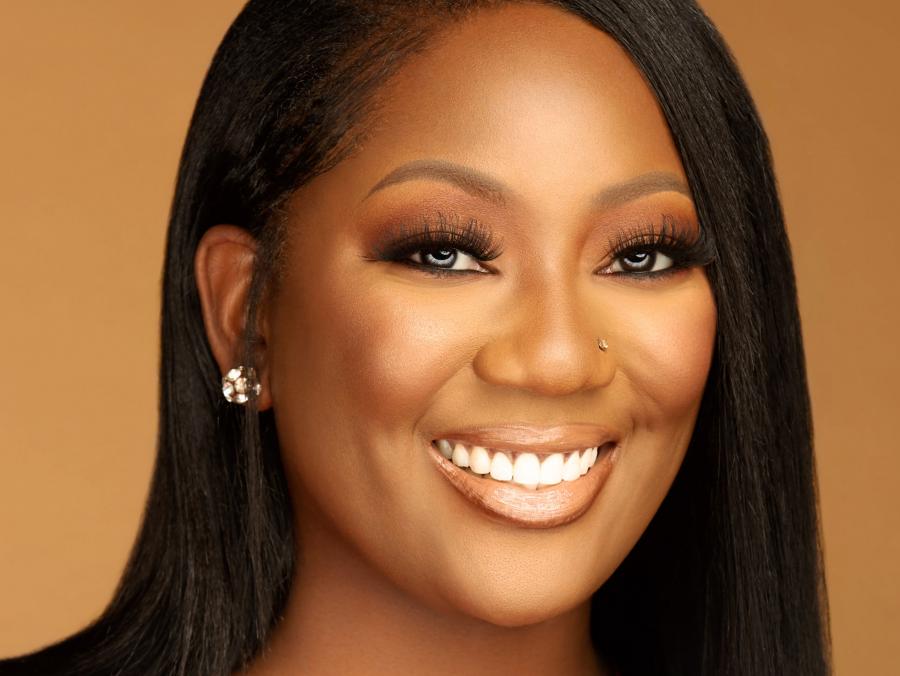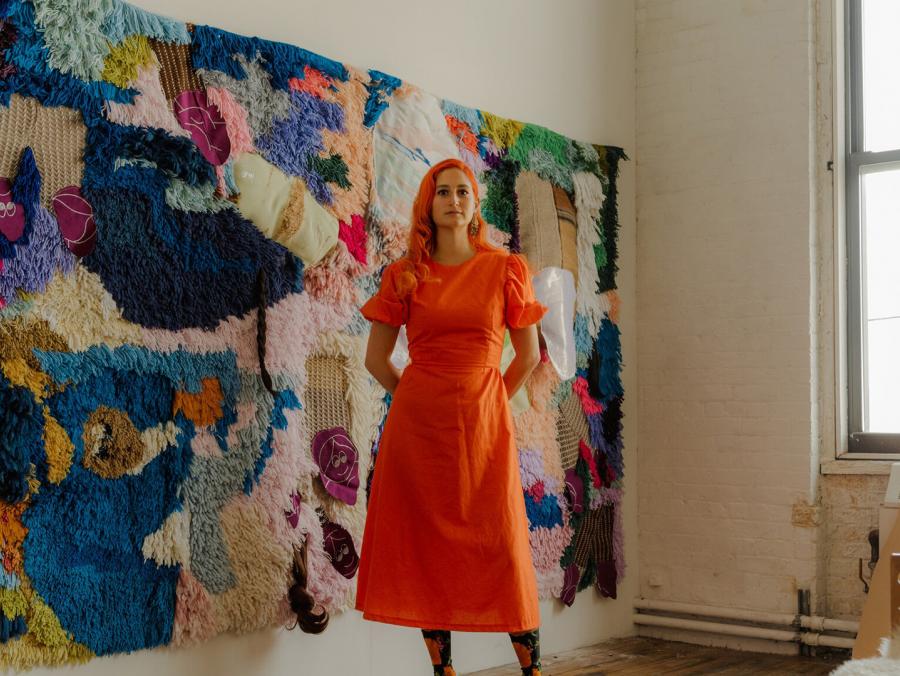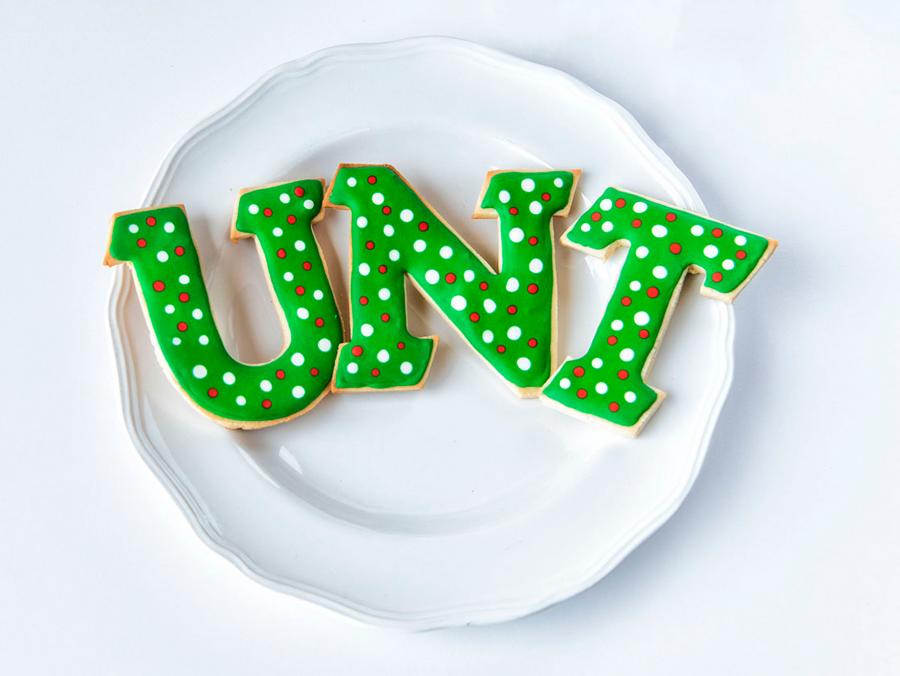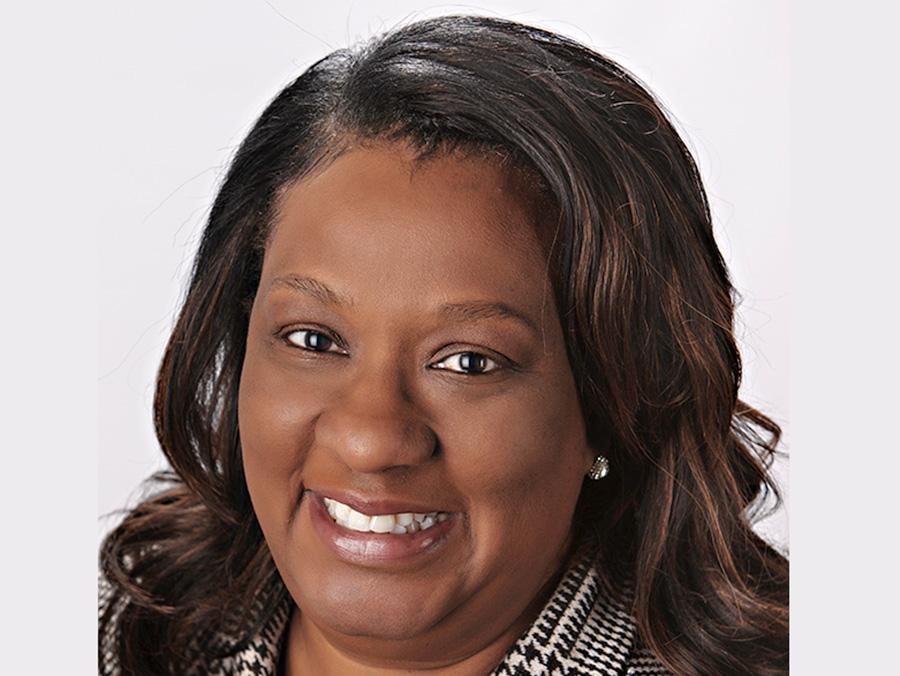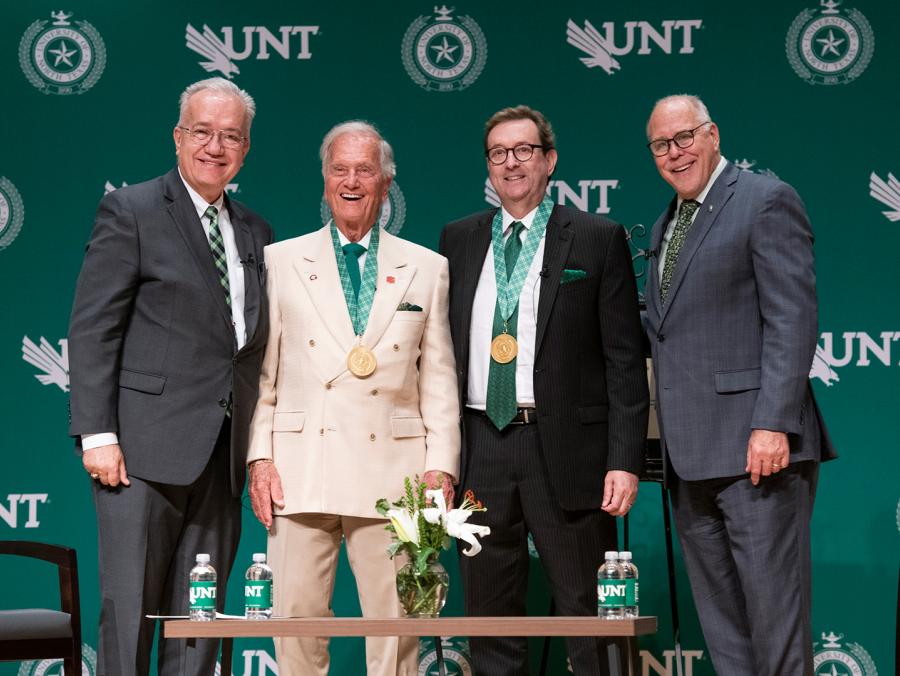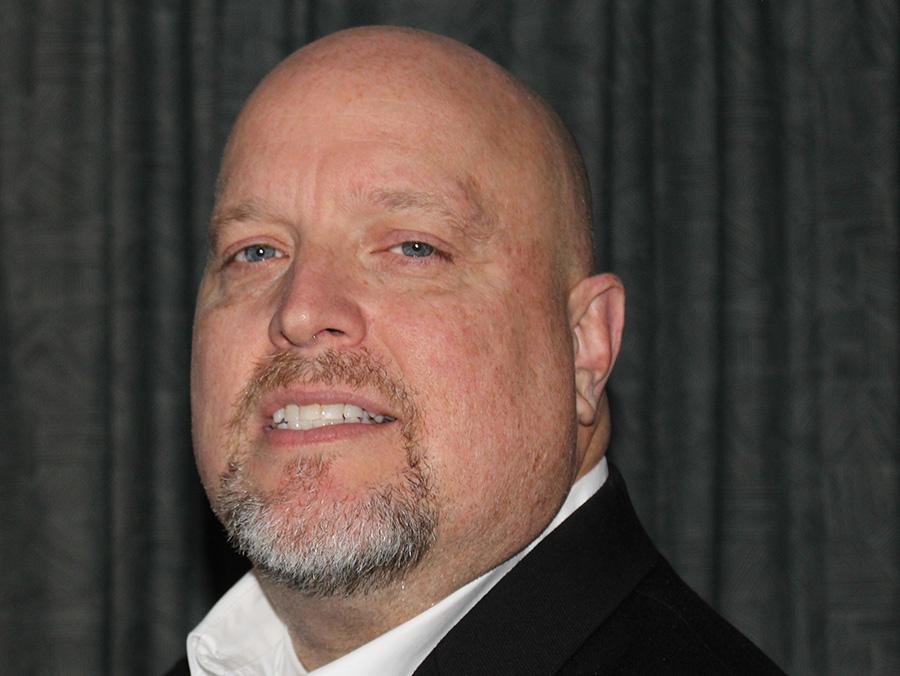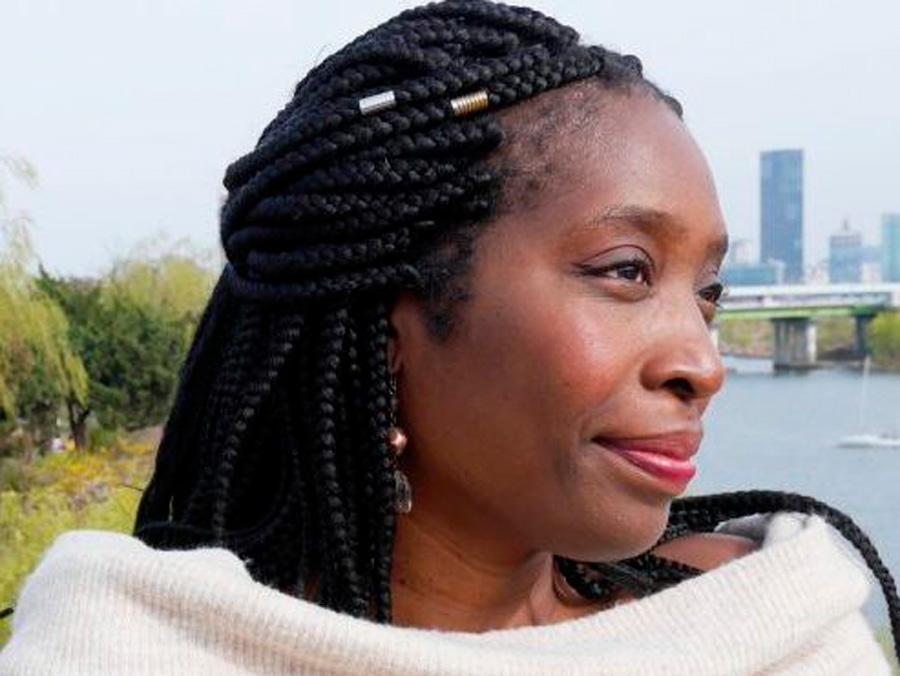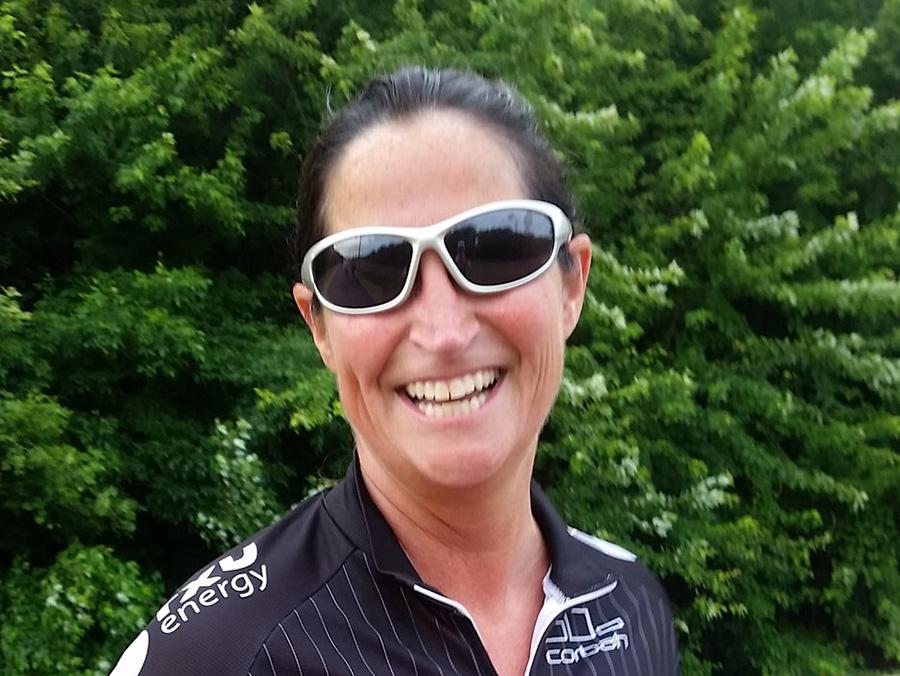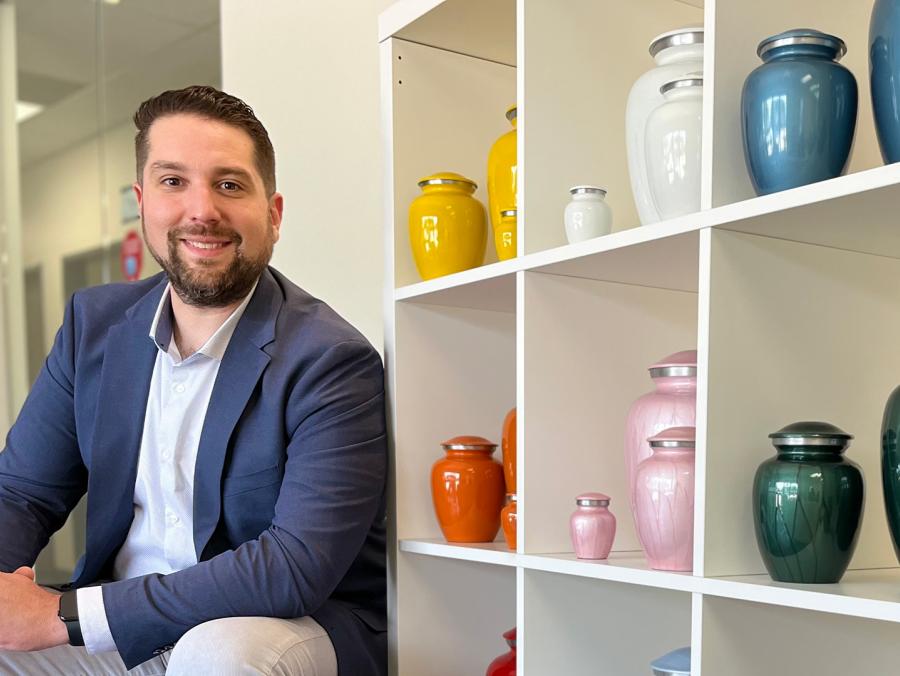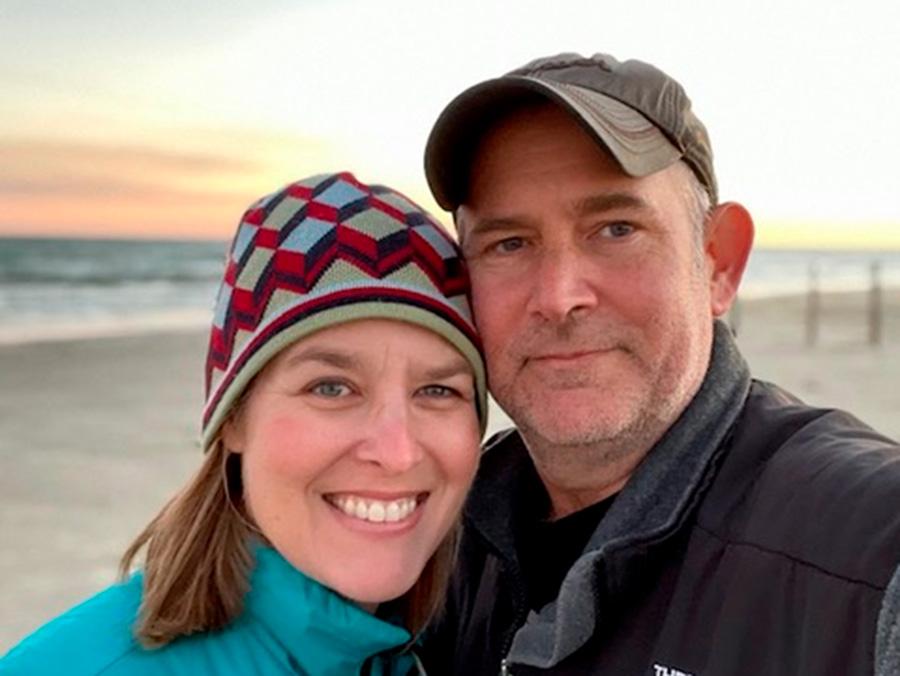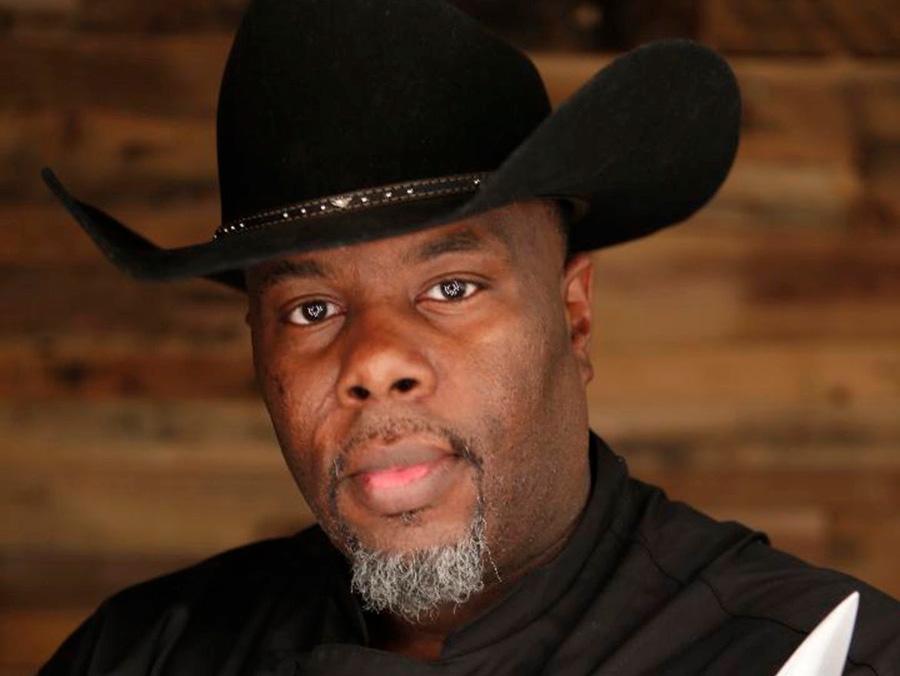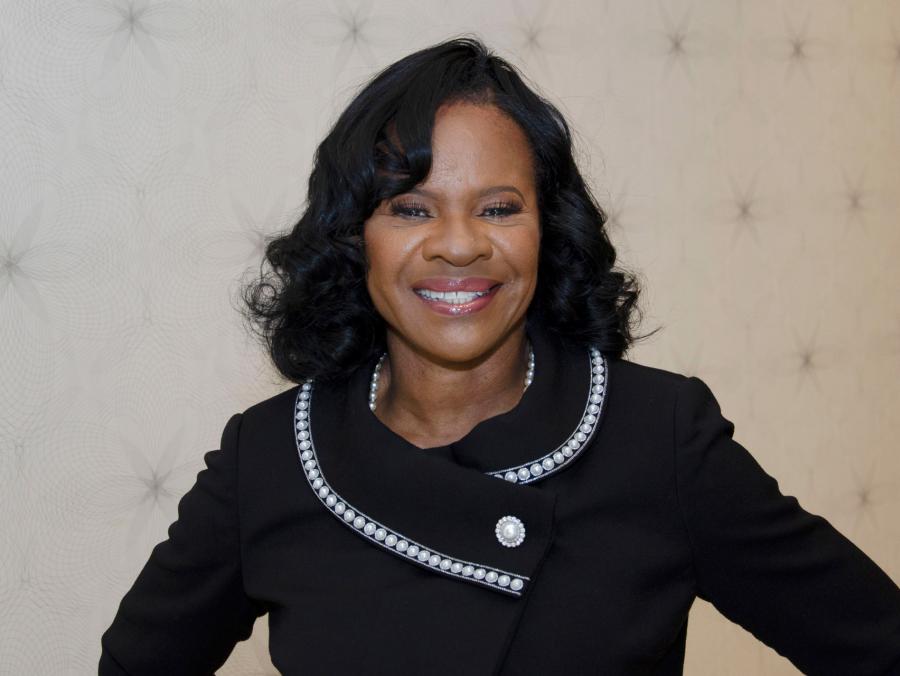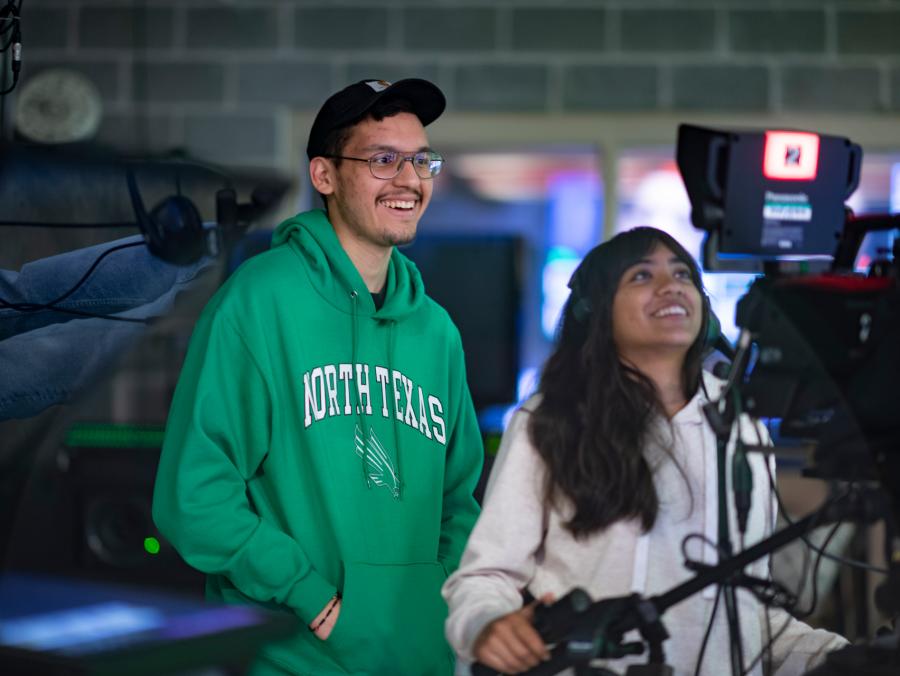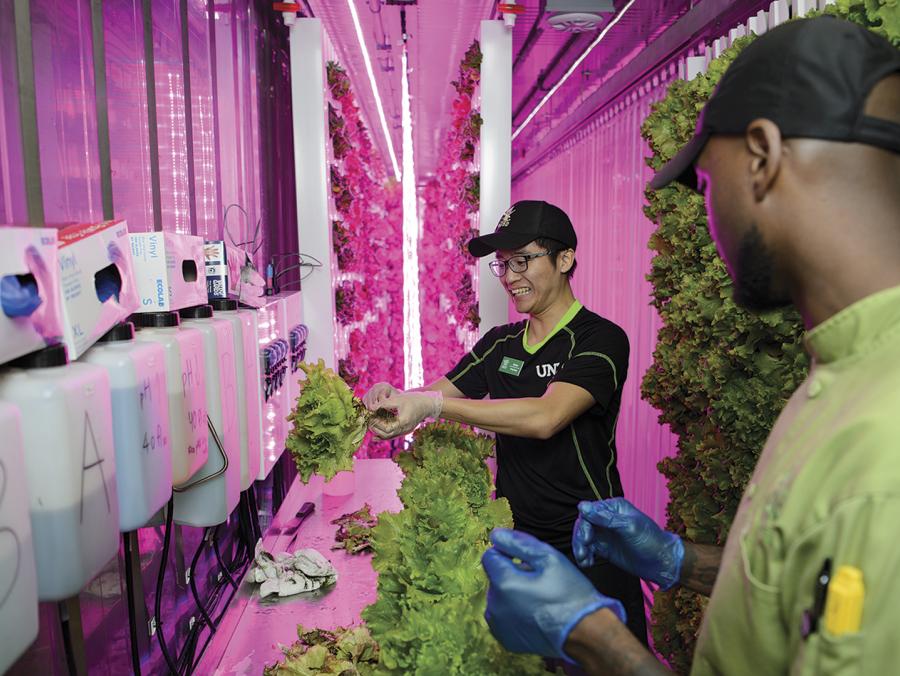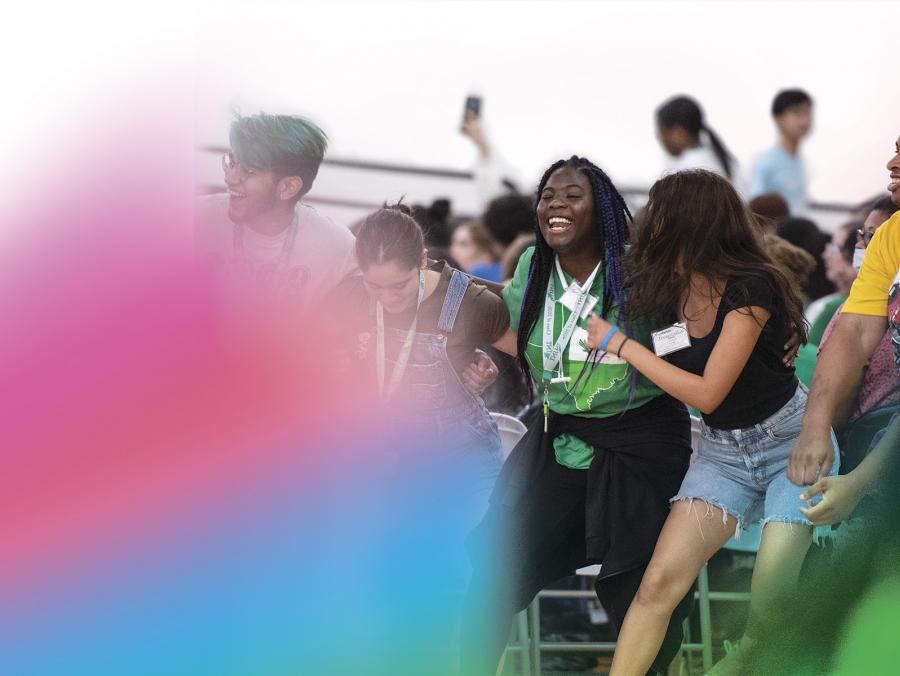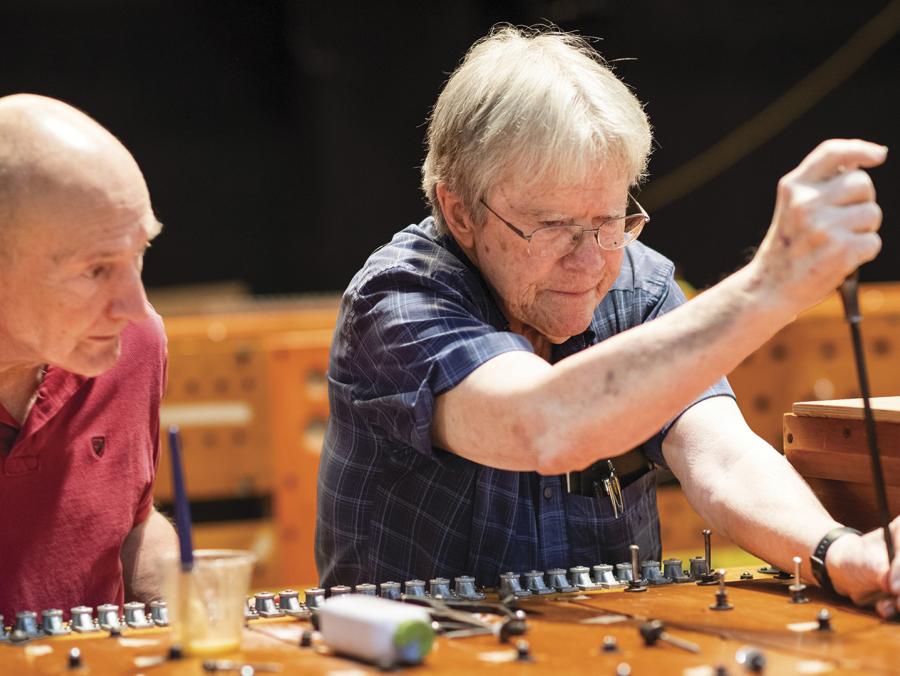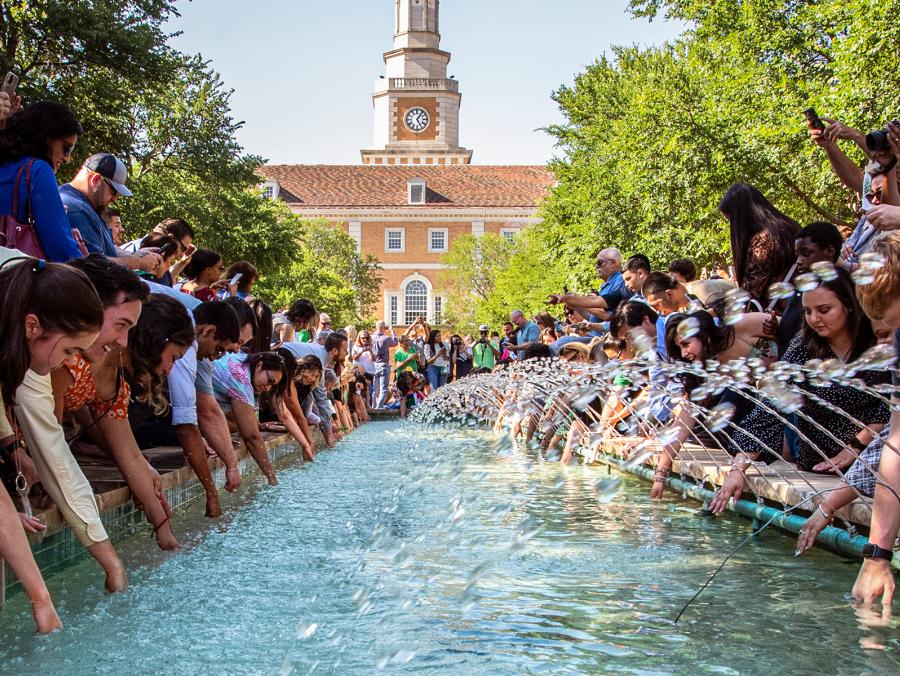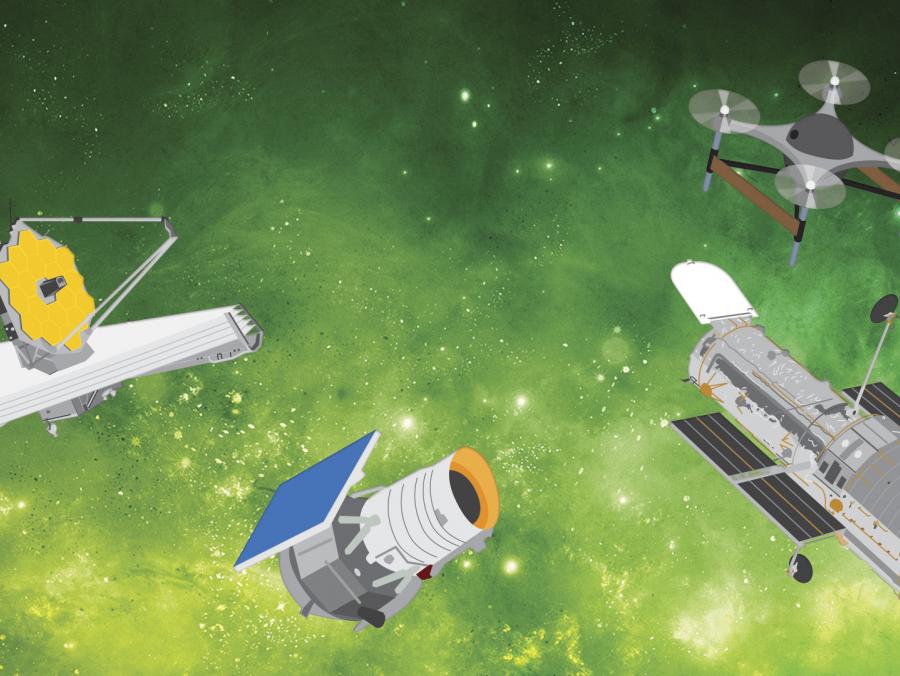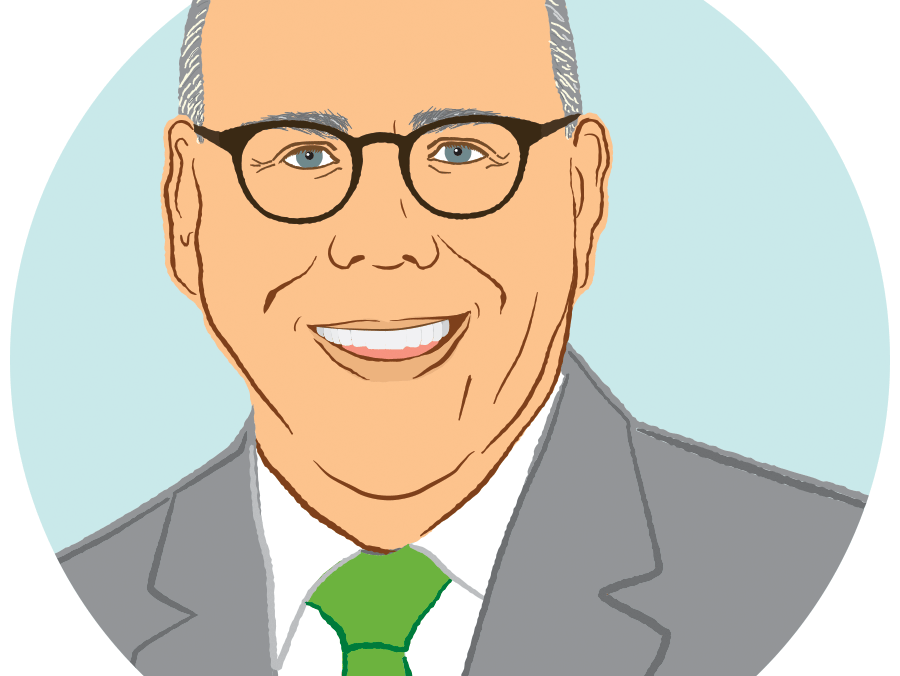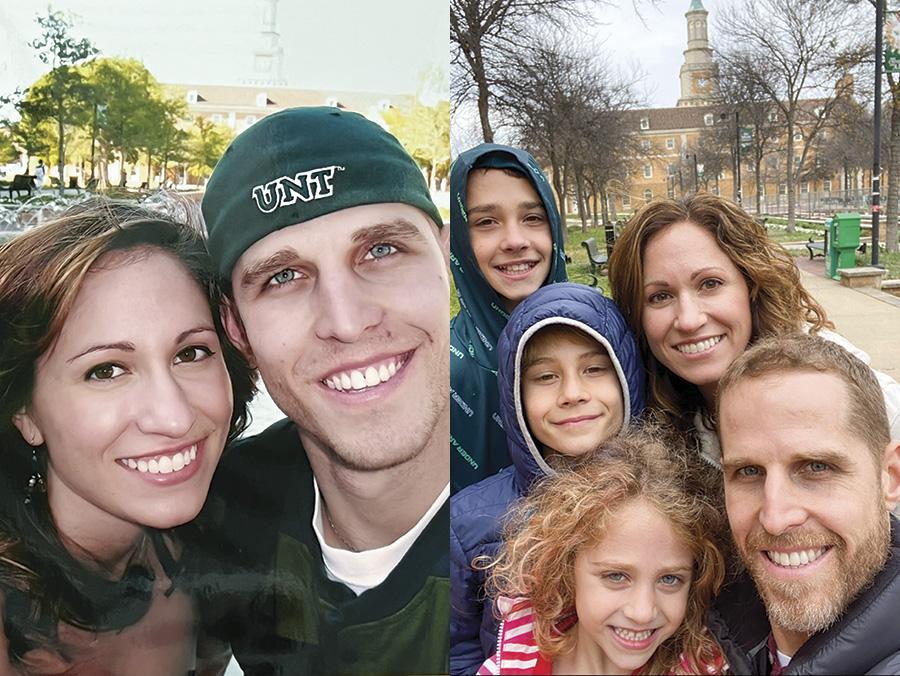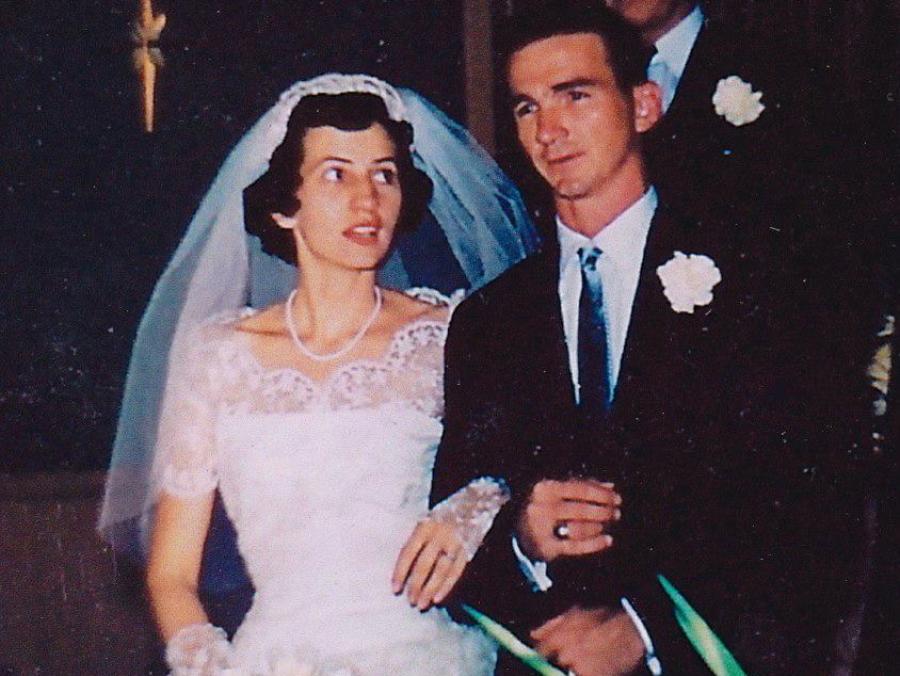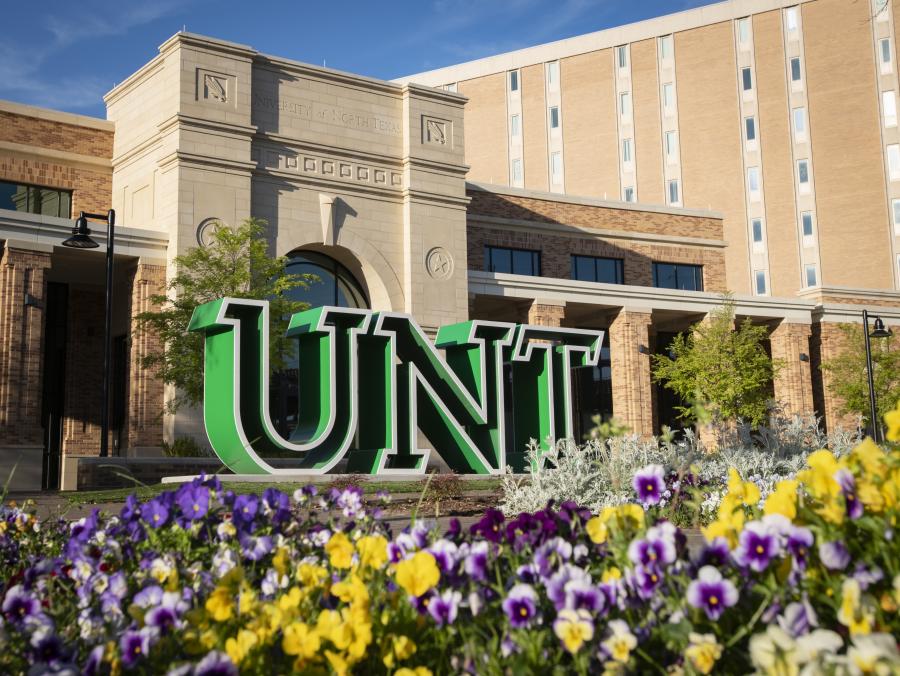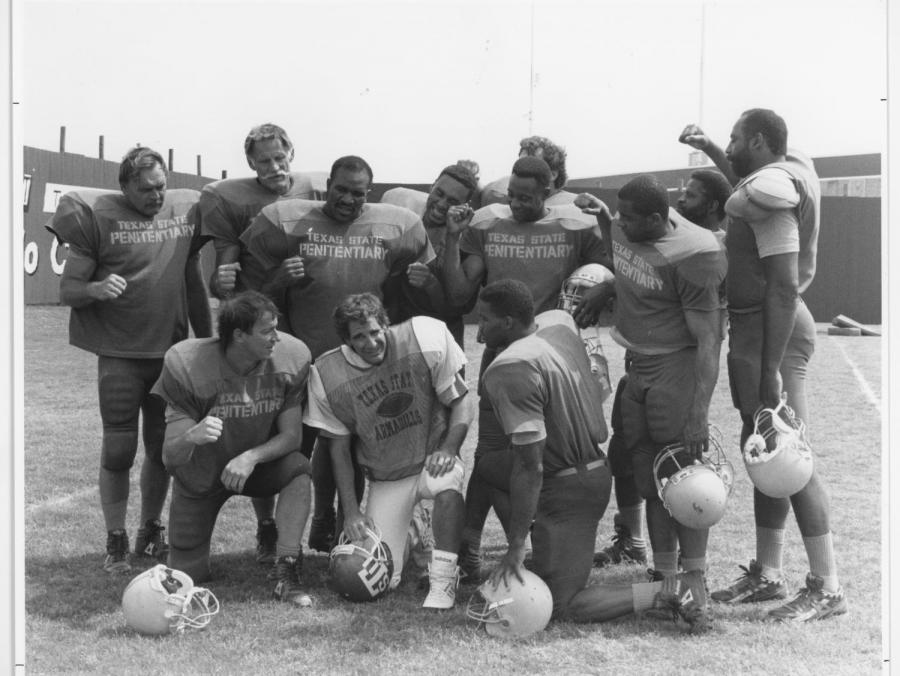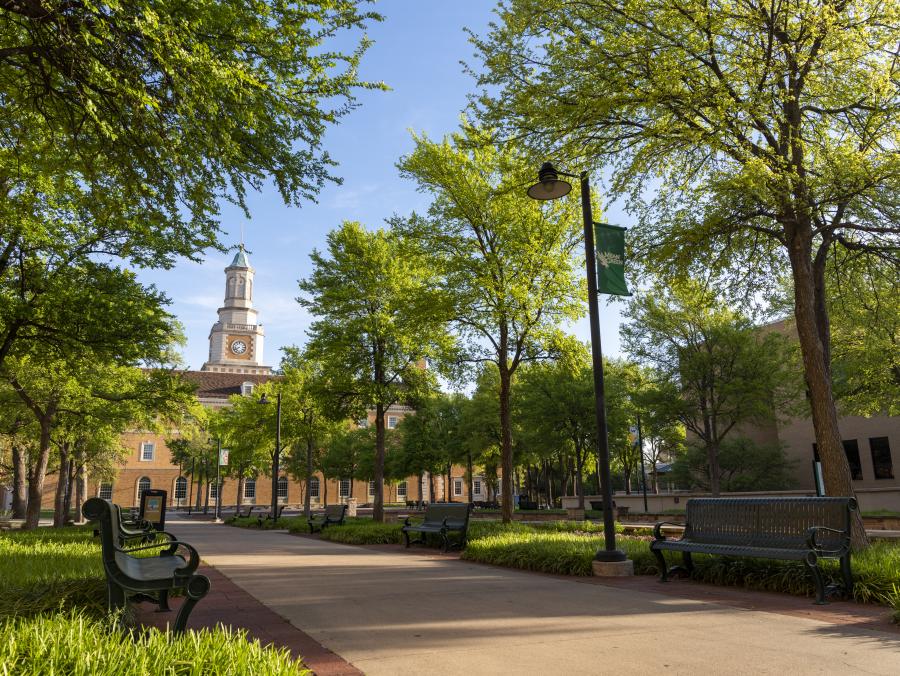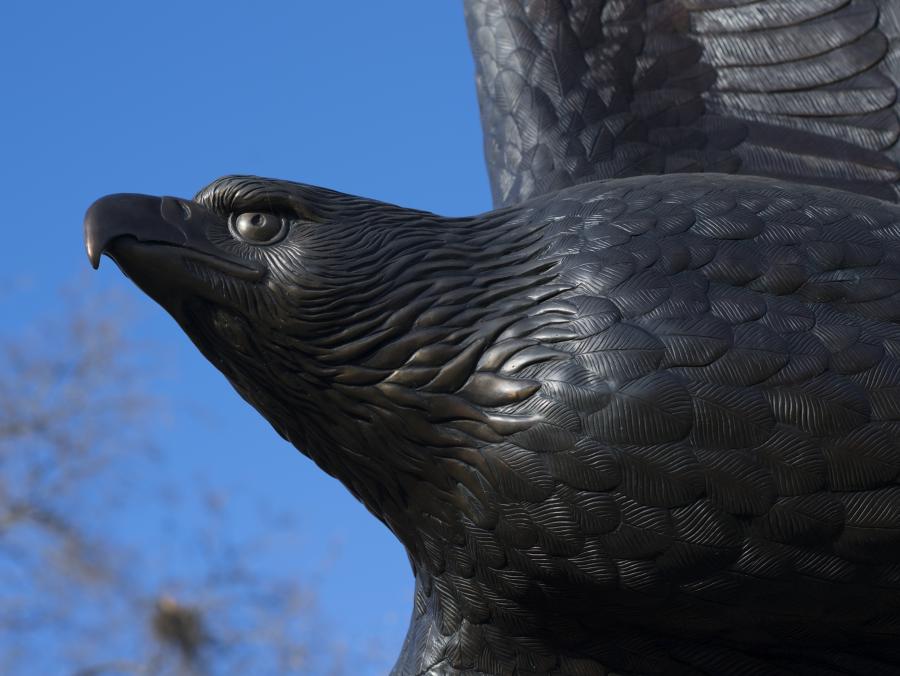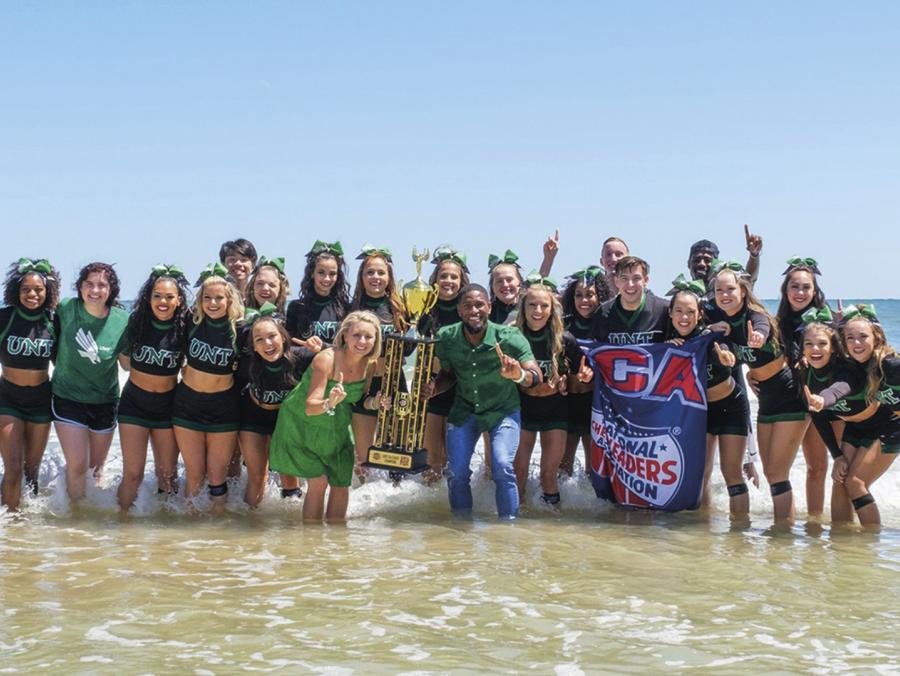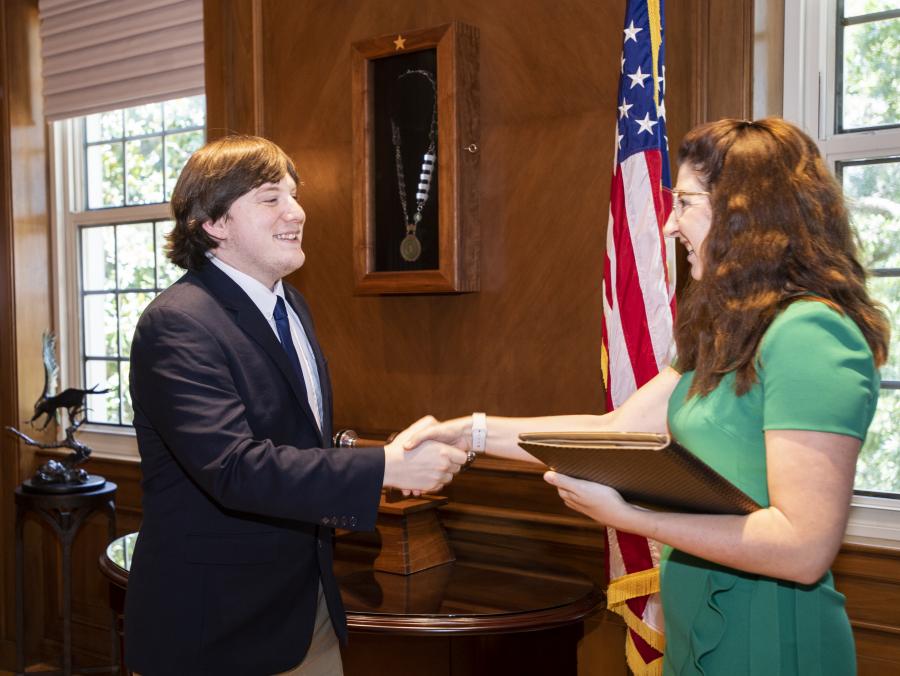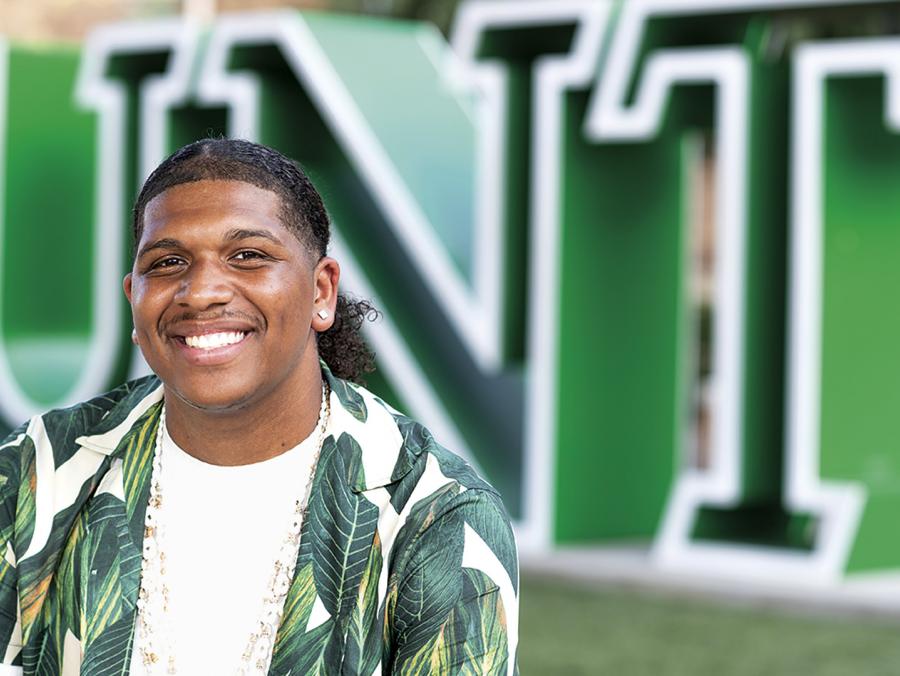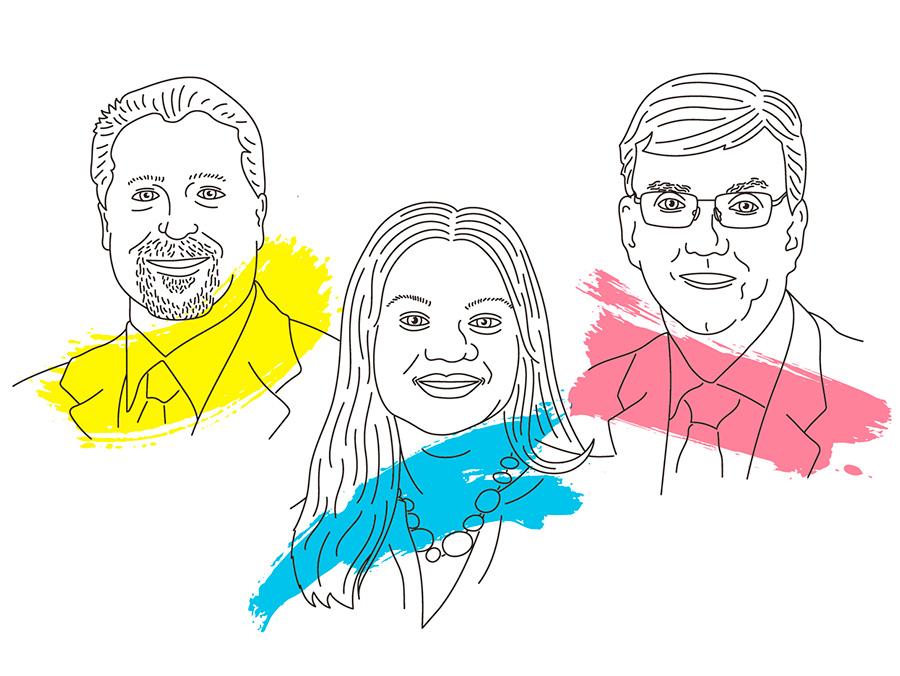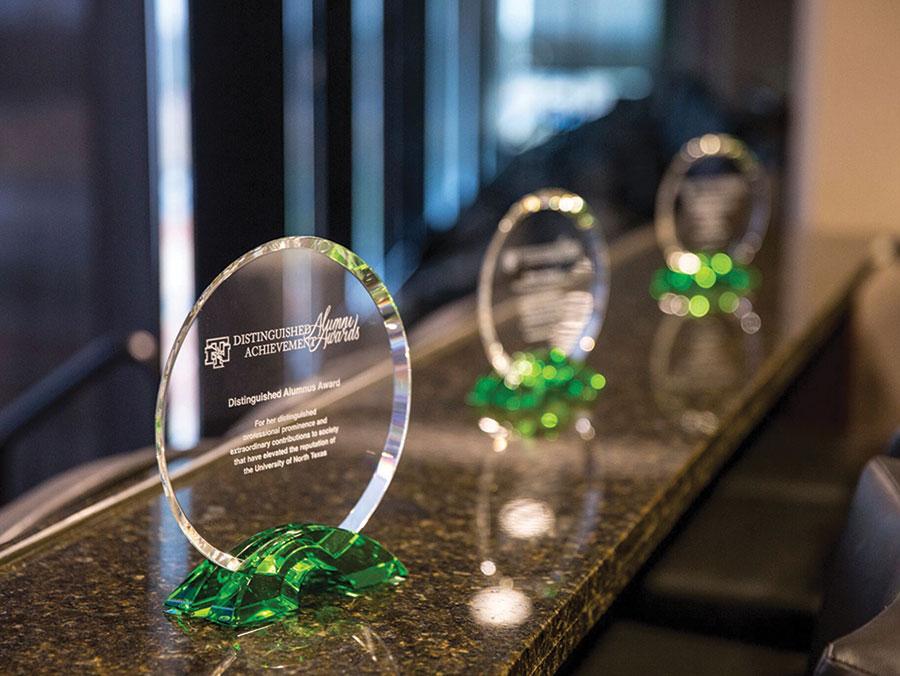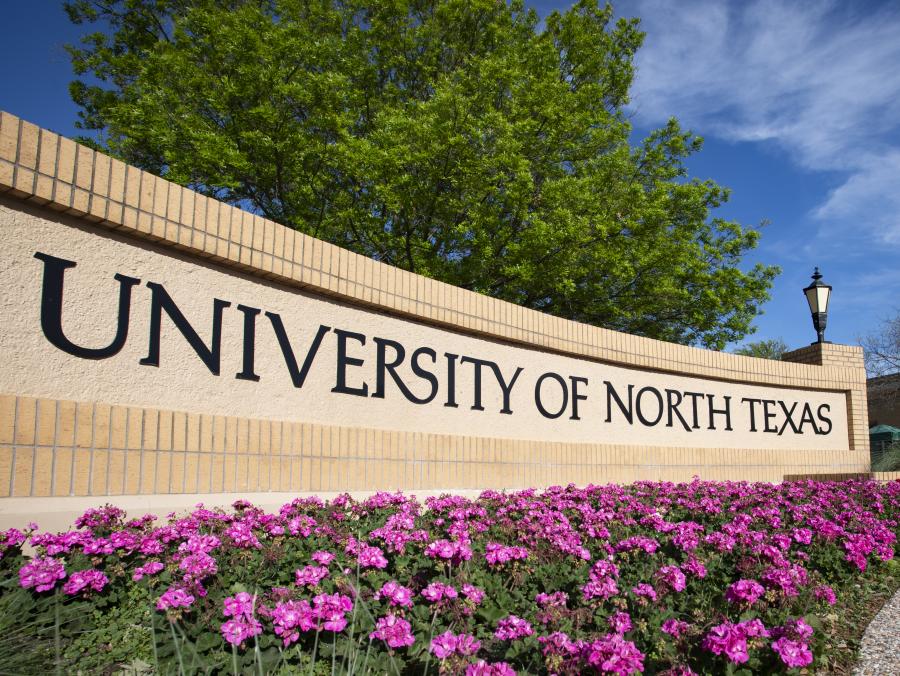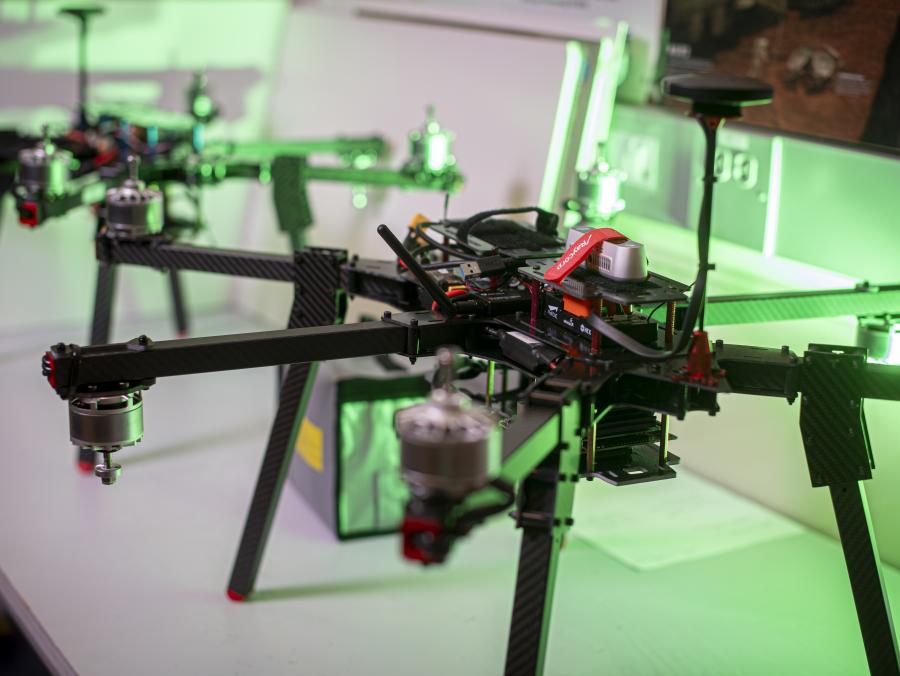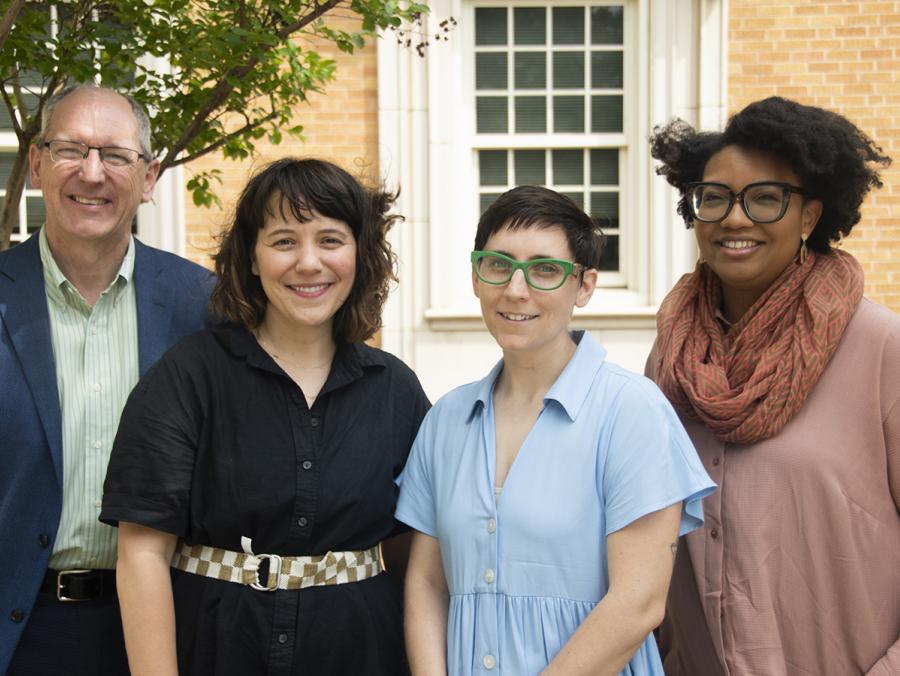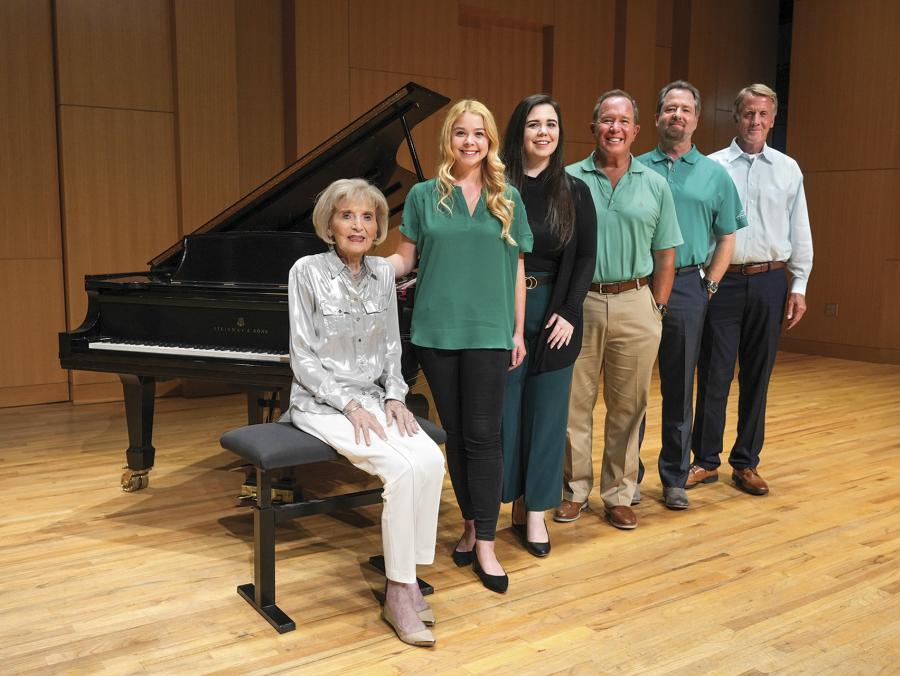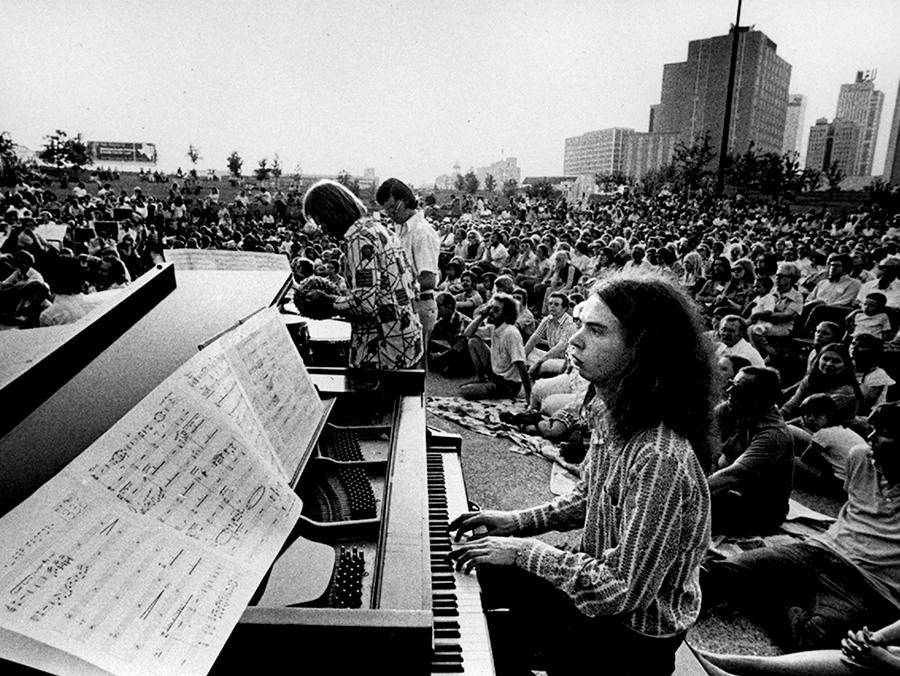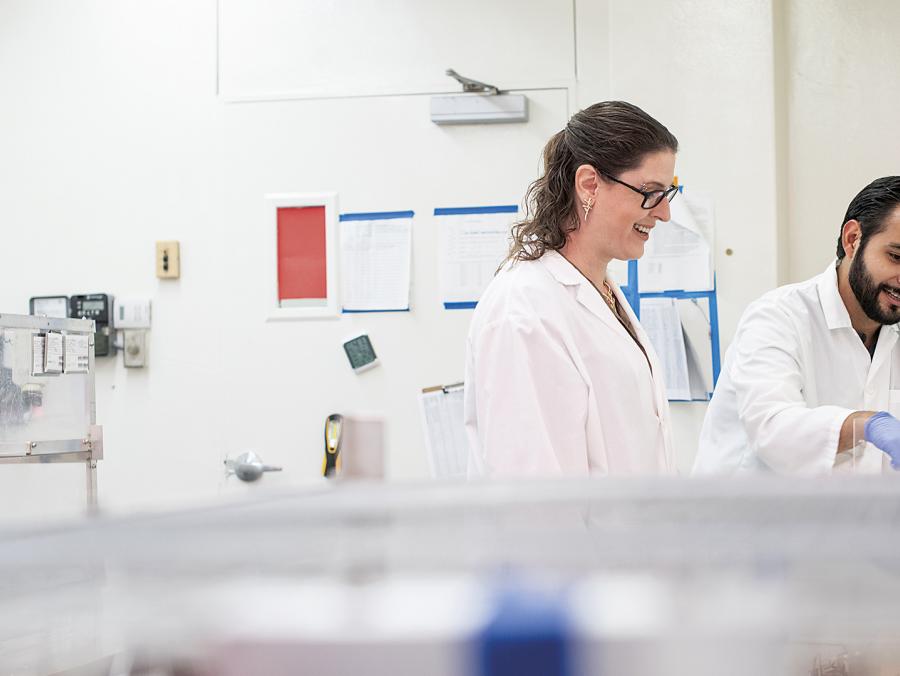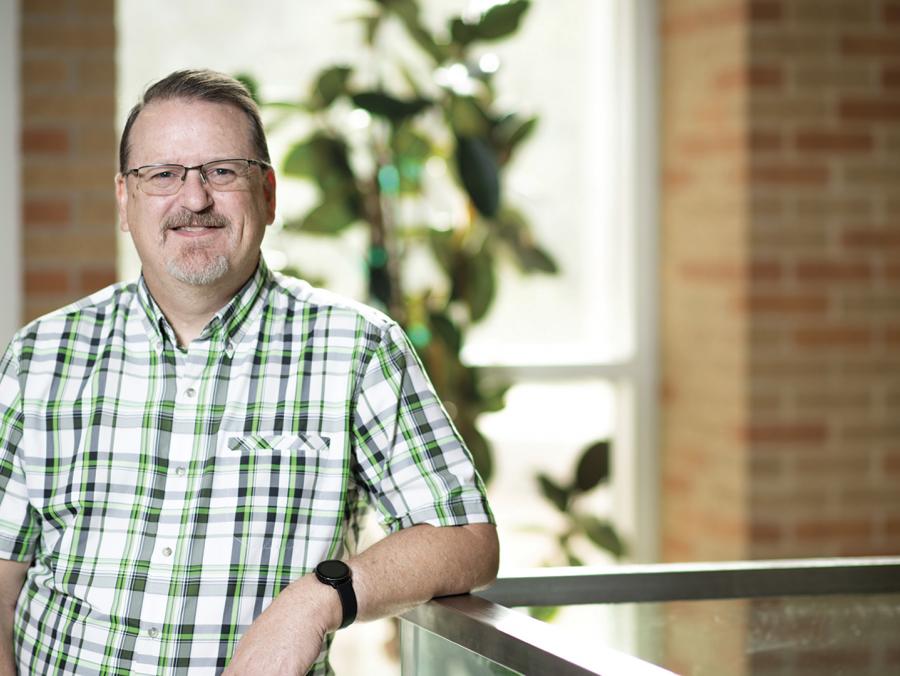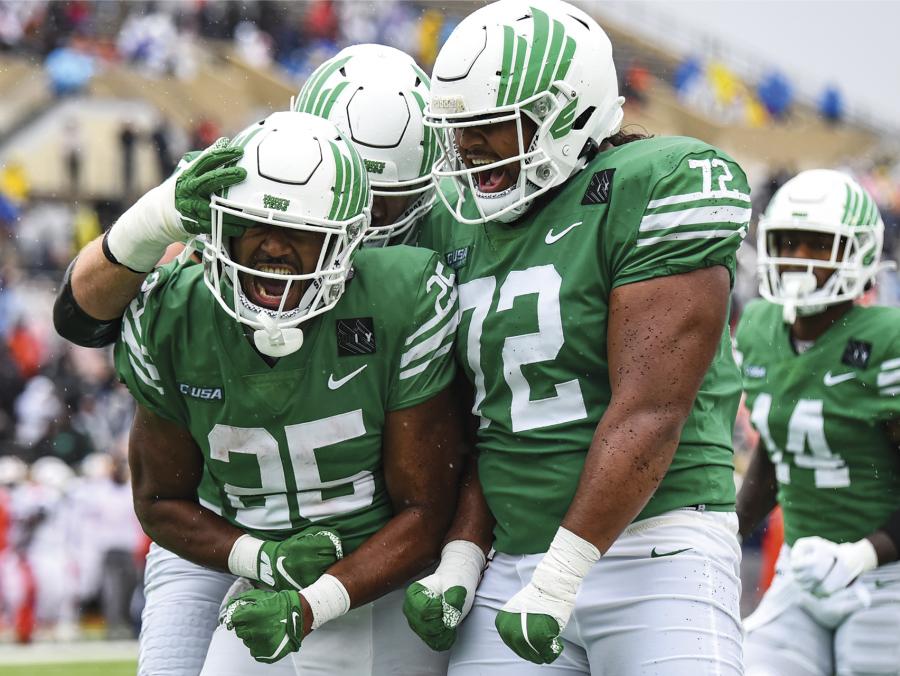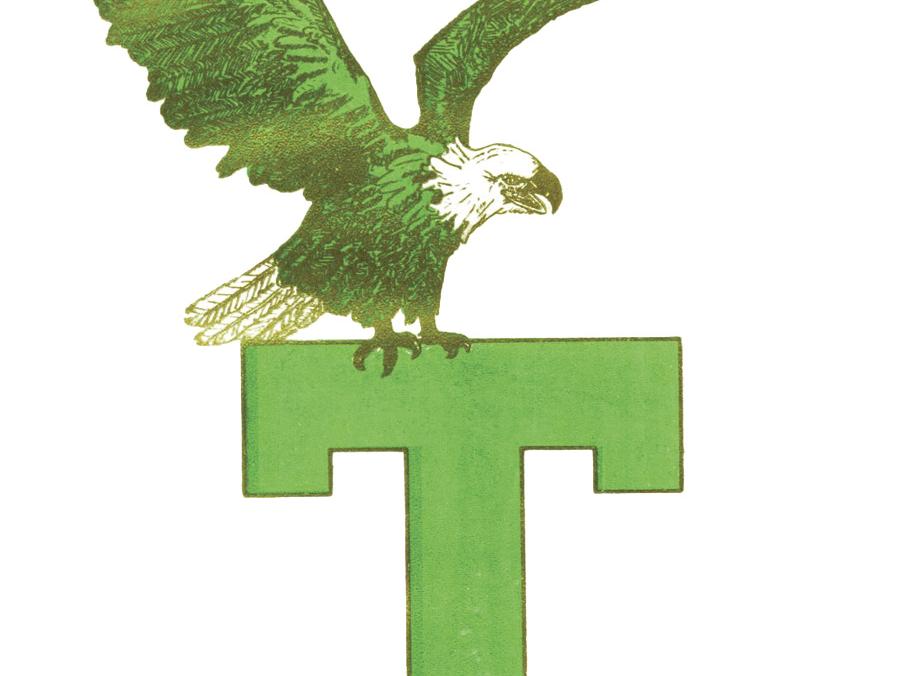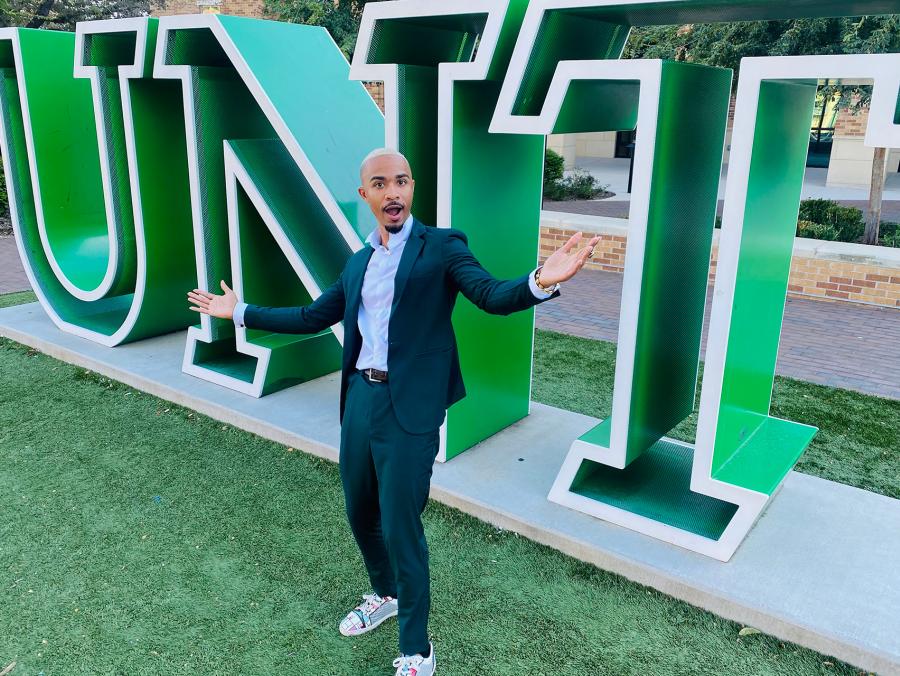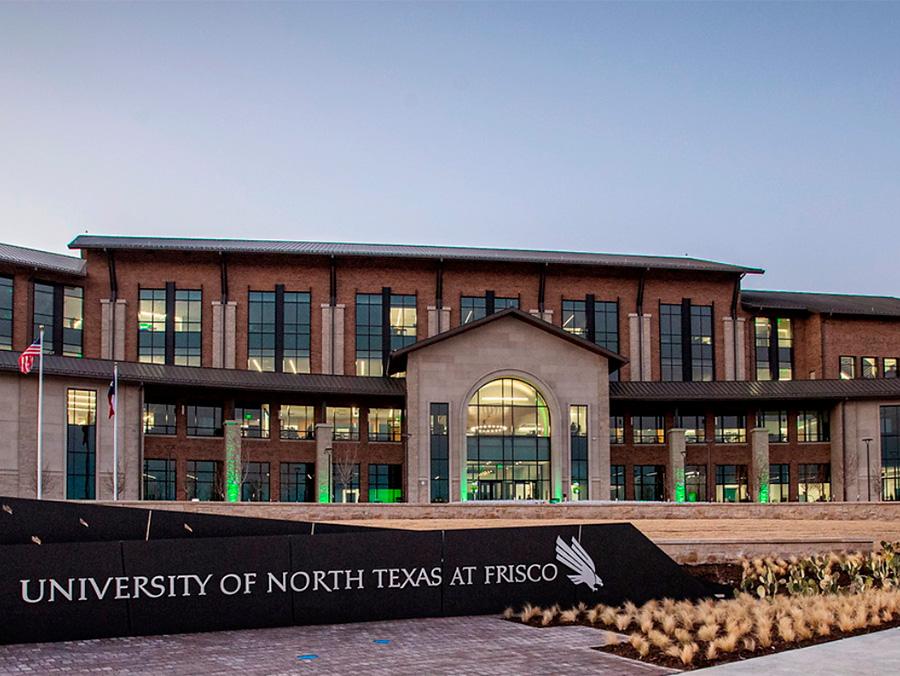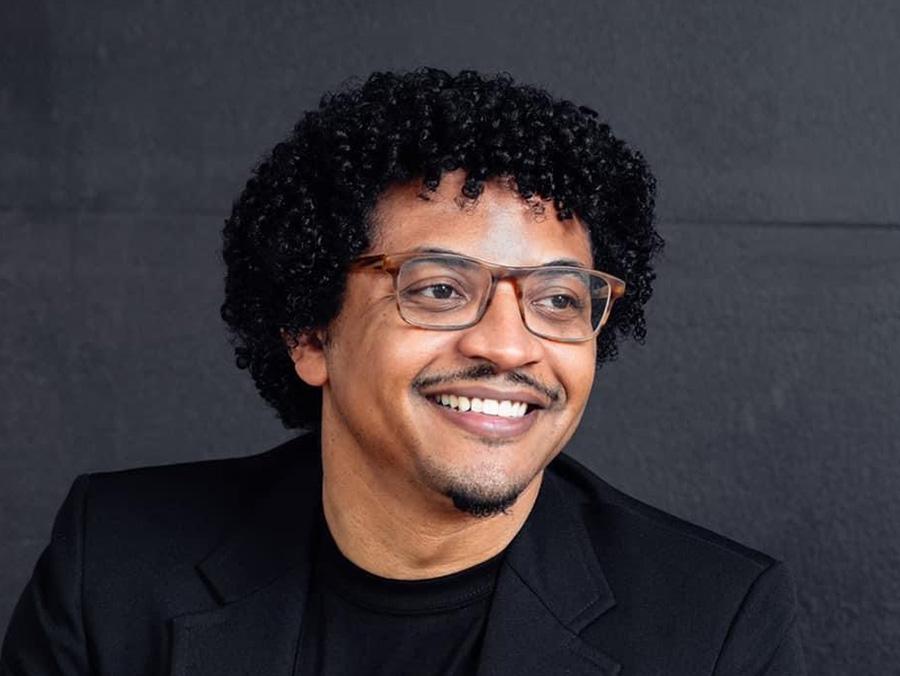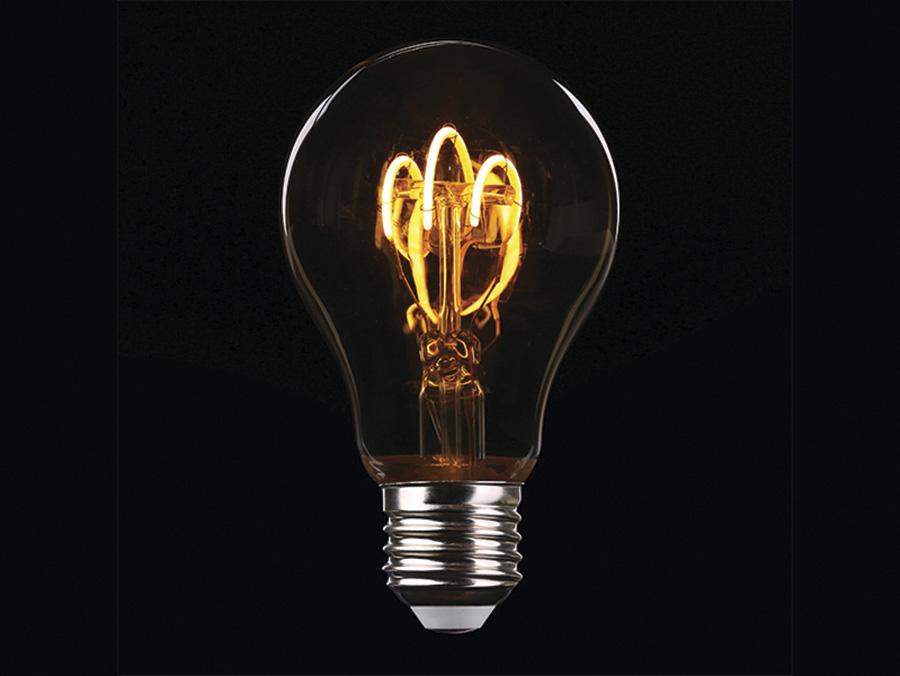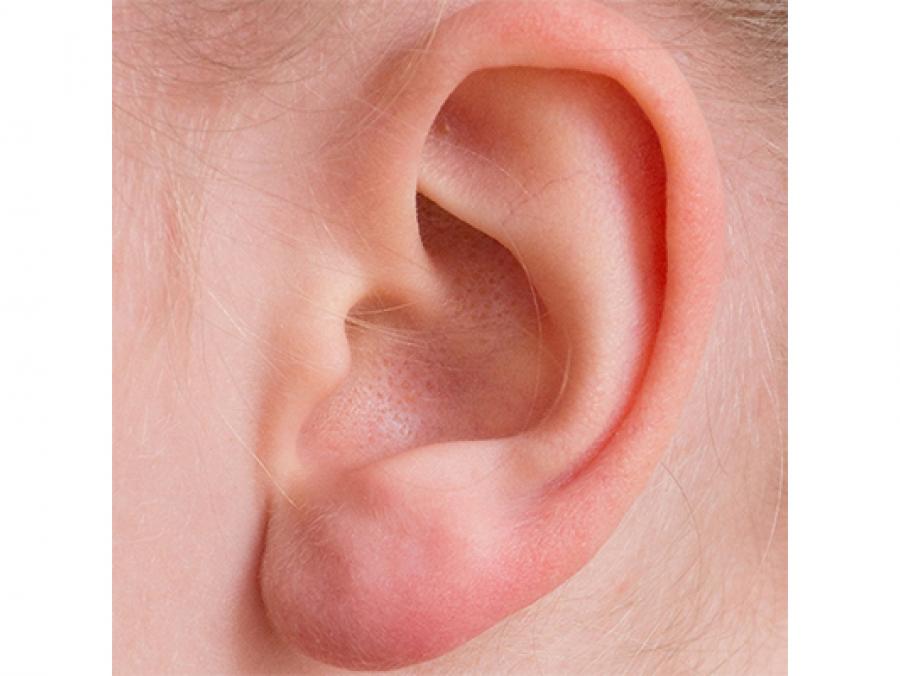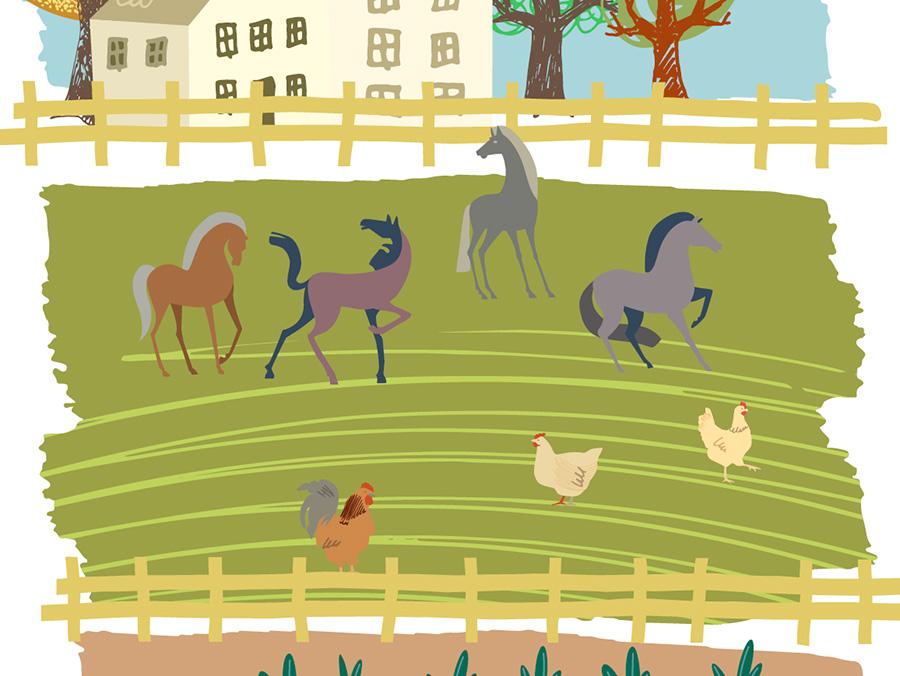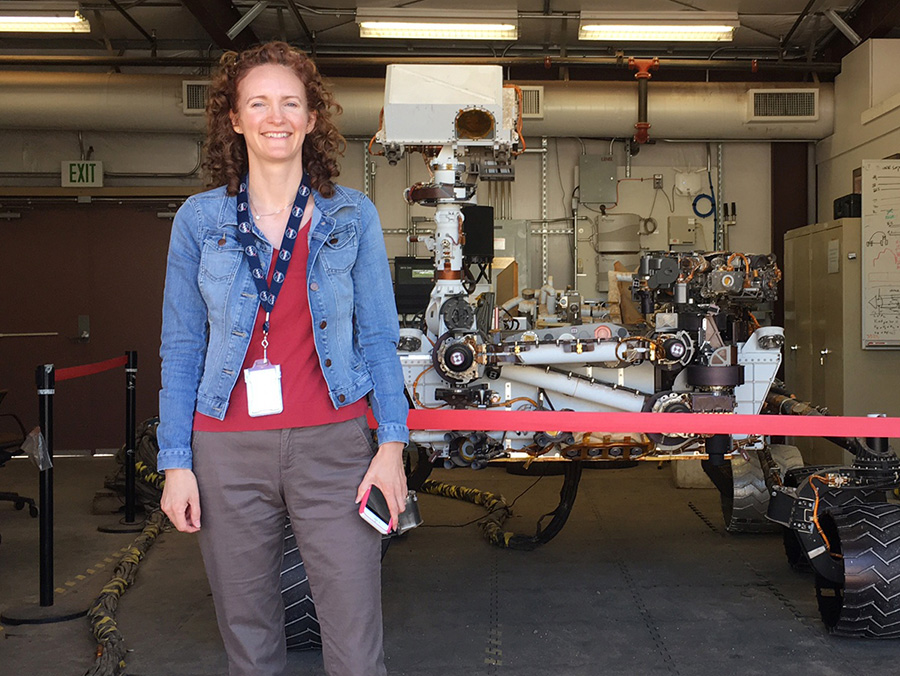
Jennifer Ross-Nazzal ('21 M.S.) had finished her Ph.D. in history when she landed a full-time job at NASA in 2004.
"The planets aligned," she quips.
Ross-Nazzal works as a historian at the Johnson Space Center -- even publishing the book Making Space for Women: Stories from Trailblazing Women of NASA's Johnson Space Center. But when she first got off the phone about they job at NASA, she told her future husband, "They mentioned something about the SkyLab?"
She confesses she didn't know much about the agency.
"I learned a lot about NASA," she says. "I really fell in love with the place."
Ross-Nazzal enjoys her job as a historian at the Johnson Space Center so much that she recently earned her master's degree in information science at UNT and pursued two College of Information certificates -- Digital Curation and Data Management, which she earned this spring, and Archival Management, which she'll finish in the fall -- to strengthen her knowledge in archiving and curating documents.
Ross-Nazzal, who earned her Ph.D. from Washington State University, began her career as a specialist in women's history and wrote the book Winning the West for Women: The Life of Suffragist Emma Smith DeVoe. In 2000, she landed an internship at NASA while pursuing her doctorate in public history, a field aimed toward those who want to work outside of colleges and universities.
She then earned a second internship, which turned into a yearlong job and led to her full-time position. As part of her duties, she's constantly answering emails -- from students who need information for their school projects or relatives who want to know more about their family members' jobs at NASA.
But she mostly relishes talking to people who make NASA work. For an oral history project, she interviewed more than 300 people about their roles at NASA.
"I wonder what more I could learn about women at NASA," she says. "You can work at NASA even if you're a non-technical person. Librarians, attorneys and many more are part of that mission to make it successful."
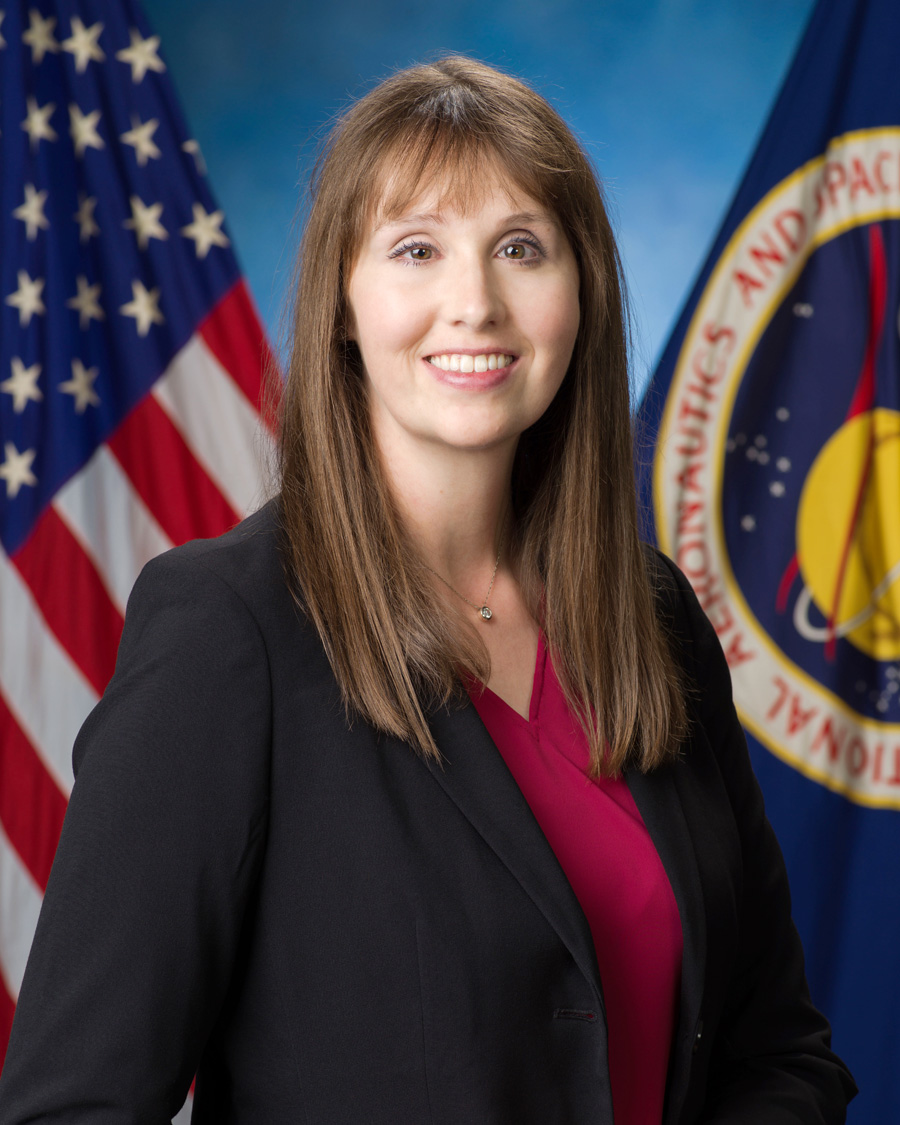
Janetta Robins Boone has the same routine each day she arrives at the Johnson Space Center for her job.
"When I drive onto campus every morning, I still pinch myself," she says. "They say 'Welcome, ma'am,' and I say 'Thank you, sir!'" she says.
And when she walks to her creative pod, she knows how exciting her job is. Boone, currently a third-year doctoral student in learning technologies, is an instructional technologist who develops computer and video training modules for the astronauts aboard the International Space Station (ISS).
The videos teach the astronauts what they may need to accomplish on their space flight. Boone uses her coding and graphic design skills to help develop videos, often shot in the Space Vehicle Mockup Facility that is the same scale as the ISS. One video showed four ways to repair an air leak on the ISS. And it turned out the astronauts needed that video when a small leak occurred.
"That was cool to feel like they're actually watching," she says. "It's rewarding to feel like I contribute to a teeny piece of the pie."
She also develops lessons for flight controllers, using interactivity such as clickable hot spots to train them on their flight consoles, and virtual reality simulations for international partners so they can experience deep space. And she created an immersive, 3D desktop fire drill training for the Johnson Space Center.
Boone is supplementing her skills by earning her doctorate.
"What if I pair teaching and academics with my love of all things technology?" she says. "I feel like it was a perfect fusion -- the learning side with tech."
Even though she is learning online, she has embraced the experience -- dubbing her cohort the AcademiGods and creating custom logos, Zoom backgrounds and T-shirts for the group.
The new degree will complement her art and art history degree from Brigham Young University and a graphic and web design degree from the University of Florida.
When she saw a flyer that NASA was looking for instructional designers, she thought it was perfect for her.
"I love contributing any way I can to the mission of NASA and space flight in general," she says.
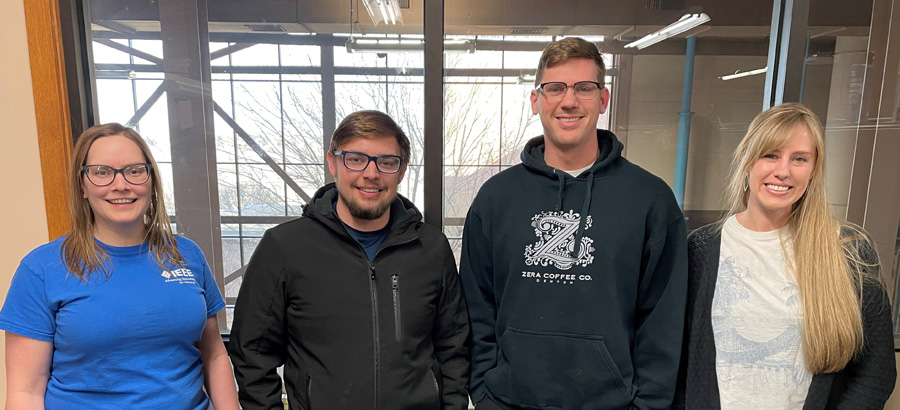
A crew of astronauts is on its way to Mars. Their shuttle contains a strict amount of fuel, but the crew finds itself in orbit longer than it planned and they look for a good place to land. They definitely want to avoid dust storms and other hazardous weather conditions.
A group of students in the College of Engineering created a plan for them. Led by Colleen Bailey, assistant professor of electrical engineering, the group used machine learning to identify dust storms on the red planet as part of the NASA MINDS (MUREP Innovative New Designs for Space) competition. They captured third place overall and second place in the Systems Engineering Paper category.
It was a tough task.
"There's not a lot of data or images available on Mars," Bailey says. "In fact, I think there's only one publicly available data set that they found."
The students used that data set, which they processed for use in their machine learning algorithm.
"There aren't base stations or weather stations all over Mars like on Earth for us to correlate that information with satellite imagery and make better connections," Bailey says. "So what they're able to do with just satellite images alone is extremely impressive."
As technology improves and travel to Mars becomes a reality, stations will be able to collect data in certain locations on the planet that will ultimately make the entire prediction system better -- which would be the goal, senior electrical engineering major Corey Reyna says.
The group used a modified Binary Classification Vision Transformer (BC-ViT) combined with classical computer vision techniques for the project.
"It was really cool and it was an awesome opportunity to work with NASA," senior electrical engineering major Jared Riley says. "The driving force for our motivation was being able to work on something that was cool and contributed to something real time in real life. The fact that we did it for NASA was just the icing on the cake."
As impressed as they were to work with NASA, the group -- which also included Shannon Williams, a senior electrical engineering major -- was more excited to implement a state-of-the-art vision transformer algorithm, currently revolutionizing computer vision.
"I can have the stereotypical, 'Back in my day, I was around when this started,'" Reyna says. "To contribute in some way to a field that is so much bigger than yourself is one of my favorite things about this project."

When Cassini Nazir, assistant professor of design, told his students they would be creating a museum exhibition about a NASA project, their reaction was, "Oh, wow!"
Then he sensed they also were intimidated.
But he knew the dozen students were capable of telling the story of Astro-1, the 1990 mission on the space shuttle Columbia that took place after the Challenger explosion and launched UV and X-ray telescopes into space research. It fit perfectly with Nazir's research of interaction design -- as well as his passion for the topic of curiosity, which he spoke about at the 2021 TEDxUNT event.
Nazir learned about the project after talking to Jesse Hamner, a former associate professor of data science at UNT at Frisco, whose parents worked for NASA. Richard Hamner was a contractor in the 1980s and 1990s who worked on several Space Shuttle payloads, while Elaine Hamner was head of procurement and later, deputy director of NASA's Marshall Space Flight Center.
Richard Hamner mentioned the restored telescopes from the Astro-1 mission would be housed in the Smithsonian in the future. Nazir was intrigued and made building an informative, interactive exhibit into a class project.
Nazir wanted his students to think beyond screens and appeal to the tactile senses, with the goal of building multisensory experiences.
"The challenge the students faced was telling a story without facts and figures," Nazir says. "How do you take that information and make it more interesting?"
Over eight weeks this past spring, the students studied other museum exhibits, breaking down the experience from when visitors entered the parking lot and handed over a ticket to when they reached the exhibition. They researched the history of NASA and its contributions, and they created experiences intended to show visitors the universe through Astro-1's four telescopes, to allow them to better understand how the universe looks in UV and X-ray.
The students worked with astronaut Scott Vangen and other retired NASA scientists. They were also mentored by Brian Sullivan ('99 M.A.), director of innovation and design strategy at Sabre and an instructor in the graduate interaction design program, and they conducted co-creation workshops with design research students in a class led by Ruth West, professor and director of the xREZ Art + Science Lab.
Although the Astro-1 will likely be housed in the Dulles Annex in the Smithsonian's Udvar-Hazy Center in Washington, D.C., no decision has been made about the exhibition since the telescopes won't be fully restored until 2024-25. But the students know their project will appeal to a wide range of visitors.
"The students really wanted to make a fun, informative, engaging and high-touch experience," Nazir says.
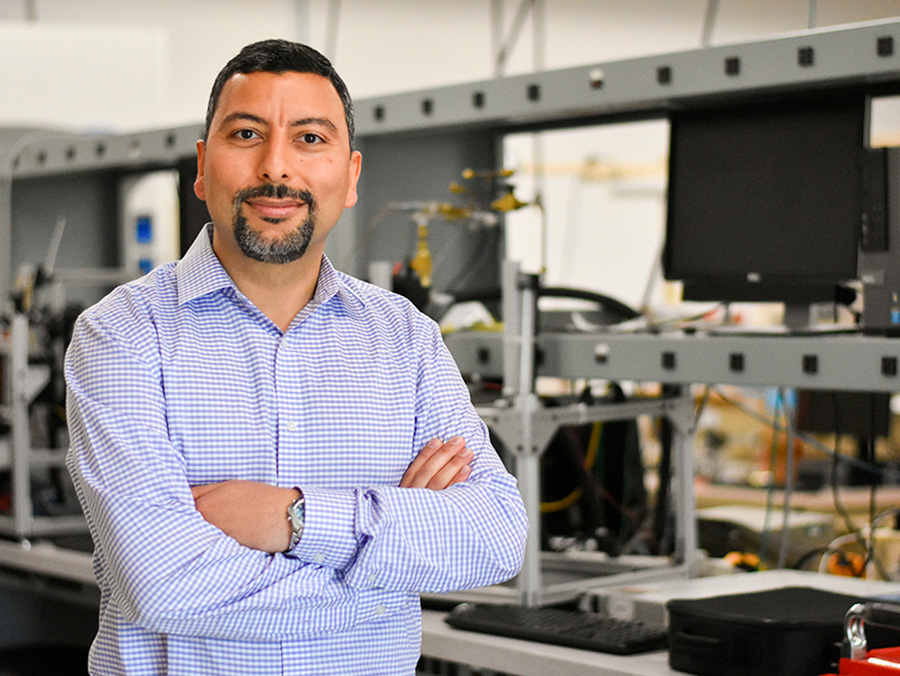
Huseyin Bostanci, associate professor of mechanical engineering, and his students want astronauts to have healthy air when they're traveling to the moon and beyond.
They're creating solutions for the Artemis mission -- which is expected to launch with humans in 2025 -- as part of the 2022-2023 Moon to Mars eXploration Systems and Habitation (M2M X-Hab) Academic Innovation Challenge, sponsored by NASA and the National Space Grant Foundation.
The team from UNT -- one of six universities selected this year in the program -- is trying to find alternative technologies for removing carbon dioxide from cabin air since the current technology has reliability issues and requires maintenance. Deep space missions, such as trips to Mars, will require months of travel, so the team is working on a prototype system to demonstrate efficient and realiable air revitalization, and enable astronauts to breathe as normally as possible.
"Separation of liquid and gas phases plays a critical role in air revitalization technologies, but it's very challenging in microgravity conditions," Bostanci says.
The project, titled "Regenerable Liquid Desiccants for High-Efficiency Humidity Control in Microgravity," received $50,000 and Bostanci, who has participated in related projects since 2019, has received $340,000 so far in grants from NASA.
He notes that he and the students get to work with NASA on developing innovative technologies and students are able to take part in internships and presentations.
"It is a great opportunity to collaborate with NASA," he says.
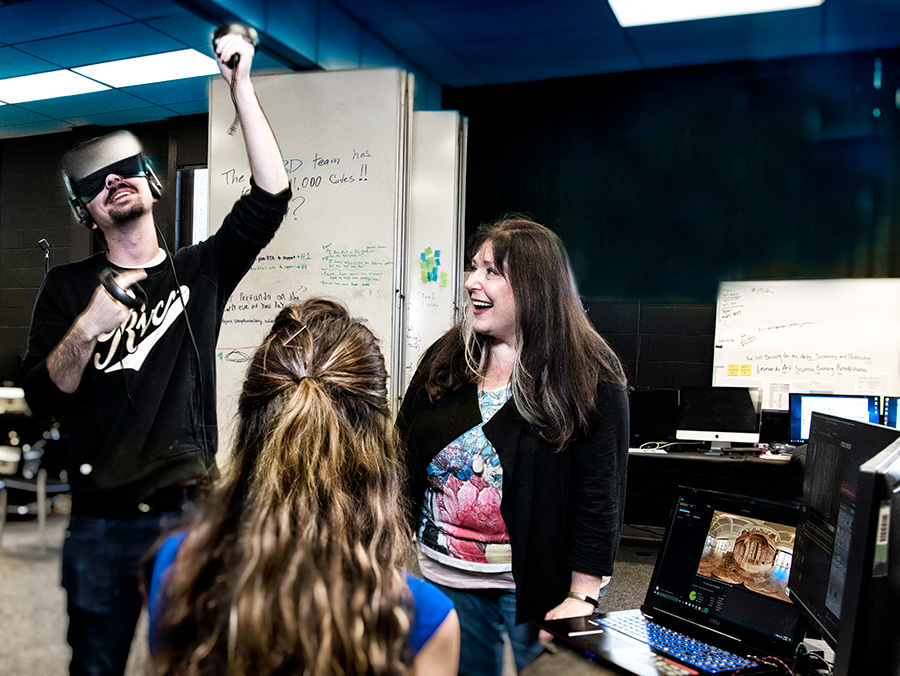
How do you harness big data about the planet?
It takes some innovative methods and collaboration.
Ruth West, professor and director of the xREZ Art + Science Lab, is part of a team that is creating new approaches to help scientists identify, track and understand the evolution of multidimensional Earth science phenomena, such as wildfire smoke plumes movement throughout the atmosphere, through the GEOS Visualization And Lagrangian dynamics Immersive eXtended Reality (VALIXR) Tool for Scientific Discovery.
Thanks to a $102,000 grant from NASA, West and other researchers are working on the project with engineers and researchers at NASA Goddard Space Flight Center, University of Maryland and University of Maryland Baltimore County.
The team will develop a scientific exploration analysis and mixed reality tool with integrated Lagrangian dynamics for the Goddard Earth Observing System numerical weather prediction model. Scientists will be able to see inside of the numerical models underlying the creation of simulations and Digital Twins -- a term used to indicate the simulation of something in the real world but in virtual reality so that data updates the simulation continuously -- to create new insights through the use of immersive technology.
West says the project will benefit NASA by creating the ability to track and understand the evolution of earth science and phenomena on very large scales.
"We live in an era when big data, machine learning and multidimensional simulation offer exciting opportunities to gain new insight into ourselves and our world," West says. "The data and models are immense and getting larger by the day. New tools and approaches to allow us to gain insight from this data at increasingly larger resolutions in space and time are urgently needed."



